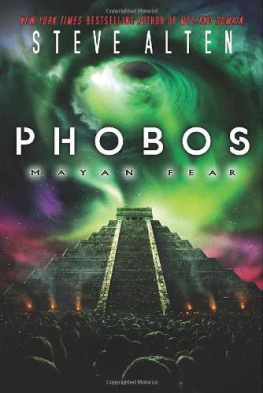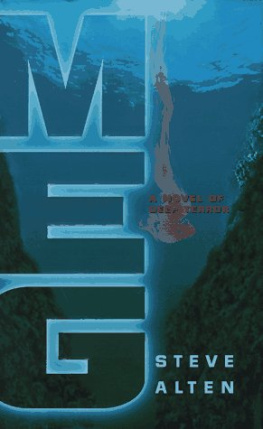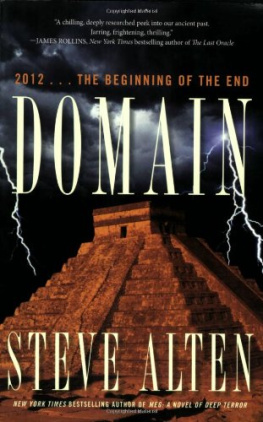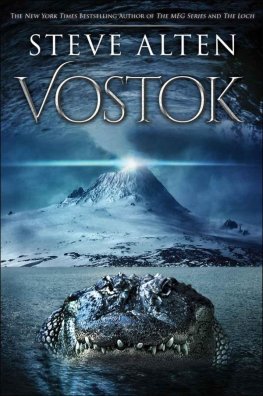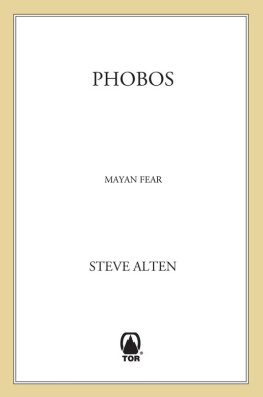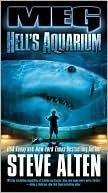ACKNOWLEDGMENTS
It is with great appreciation that I acknowledge the wonderful people whose time and effort led to the completion of this book.
Once again, I must thank my manager and mentor, Ken Atchity, and his team at Atchity Editorial/ Entertainment International for their tireless efforts. To David Angsten, who worked so hard on the manuscript, and to Ed Stackler of Stackler Editorial, thank you both for your contributions. A special thanks to Robert Leininger, whose editorial suggestions and technical expertise were invaluable.
Many thanks also to the great people at Kensington/ Zebra, especially Senior Editor John Scognamiglio and copyeditor Stephanie Finnegan. It is a pleasure to be associated with your team.
Last, to my wife, Kim, and my parents, for their continued support during the challenging times; and to those who enjoyed MEG and felt compelled to write. This novel is for you.
Steve Alten
Epilogue
T he great fish glided through the rising plumes of warm water, her alabaster skin casting an incandescent glow upon rows of billowing chimney stacks. Somewhere ahead lurked the surviving offspring of the adult Kronosaurus the shark had ravaged months earlier. But as the Megalodon neared the edge of the vent field, she was seized by an involuntary spasm that caused her to break from her course.
Thick dorsal muscles contorted, locking Angels back in a rigid arch that constrained her movements, forcing her to swim in tight circles. Within moments her abdomen began quivering, overcome by a series of monstrous contractions.
Angel stopped swimming, her oviduct widening. Then, with an agonizing push, a completely formed, twelve-foot, one-thousand-pound male pup was expelled from its mothers womb.
With rapid movements of its tail, the young hunter accelerated past its parent and disappeared into the pitch-black gorge. Moments later, a second male was birthed; this one, at nine feet, slightly smaller than its sibling. The pup darted away from its mothers outstretched jaws, following its brother to the north.
It took the exhausted female more than a dozen strokes of her caudal fin before forward momentum could be reestablished. In an instant she was tracking the two male pups through the abyss, intent on killing the very life she had birthed.
Registering the vibrations of their pursuing parent, the pups swam faster, gradually distancing themselves from each other as they darted among black smokers and clusters of tube worms. For the newborn predators, survival now depended upon their ability to avoid their insatiate mother, as well as the wrathful packs of Kronosaurs.
Unable to catch the faster pups, the female slowed, opening her mouth wide as she struggled to breathe in the oxygen-poor environment. Although she had become used to existence in the shallows, nature had condemned her species to the warm waters of the gorge. The huntress would remain thereprovided her hunger could be satiated.
Angel resumed her southerly course, homing in on the young Kronosaur. One day, perhaps, the predator would kill off the last of these pliosaurs, ending forever the abyssal food chain that had sustained her kind for more than one hundred thousand years. On that day, natures greatest killing machine would be forced to return to the surface, driven by primal instincts to surviveguided by memories of flesh and blood and bone.
Deep Pressures
Mariana Trench
12 degrees North Latitude
144 degrees East Longitude
March 22, 2001
R etired Navy deep-sea pilot Barry Leace wiped the sweat from his palms as he checked the depth indicator of the Proteus . Thirty-four thousand, seven hundred and eighteen feet. Nearly seven miles of water above their heads, sixteen thousand pounds per square inch of water pressure surrounding them.
Just stop thinking about it...
Barry glanced around the tight quarters of the four-man submersible. Racks of computer monitors, electronics, and a bewildering jungle of wires filled the pressurized hull. The watertight coffin barely had room for its crew.
Below the navigation console, team leader Ellis Richards and his assistant, Linda Heron, stared out through tiny portholes in the floor of the Proteus s bow.
See those animals with the furry green pelt? Linda asked. Those are Pompeii worms, capable of withstanding temperature variations from twenty-two degrees all the way to eighty-one degrees Celsius. The hydrothermal vents supply sulfur for bacteria to live off, which in turn are digested by the tube worms
Linda
which are a source of food to all sorts of bizarre-looking life-forms.
Linda, enough with the goddamn biology lesson, Ellis said.
Sorry. Embarrassed, the petite geologist turned back to the porthole, cupping her hands around her eyes to eliminate glare.
Smiling to himself, the subs fourth crewman, Khali Habash, looked down from his control console at Linda. The girl loved to talk, especially when she was nervous, a quality the Arab never hesitated to exploit.
Khalis real name was Arie Levy, a Jew born and raised in Syria. It had been nearly ten years since the day Arie had been recruited by MOSSAD, Israels covert intelligence agency. Since that time he had led a double life, spending half his time in Israel with his wife and three children, traveling around the Arab world and Russia the rest of the time, posing as a plasma physicist. It had taken four hard years of sacrifice for the agent to infiltrate Benedict Singers organization, but here he was, seven miles beneath the Pacific, about to learn secrets that could change humanity forever.
Arie checked the external temperature gauge. Hey, Linda, can you believe the waters seventy-eight degrees?
The girl perked up again. Incredible, isnt it? We call it hydrothermal megaplumes. The hot mineral water pumping out of these black smokers is seven hundred degrees. As it rises, it warms the freezing seawater column until it reaches neutral buoyancy at about twelve hundred feet above the floor of the Trench. Ocean currents then spread the plume laterally. The floating layer of soot from the minerals creates a ceiling that acts like insulation, sealing a tropical layer of water along the bottom of the gorge.
The layer never cools?
Never. These hydrothermal vents are chronic plumes. Theyve been active since the Cretaceous period.
Ellis Richards checked his watch again. As the projects team leader, he was perpetually worried about falling behind schedule. Christ, three hours and it seems like weve barely made any headway. Linda, is it just me, or does it seem like this pilot has no idea what hes doing?
Barry Leace ignored the insult. He checked his sonar and cursed under his breath. They had moved too far ahead of the Benthos, Geo-Tech Industries (GTI) mobile deep-sea lab community and submarine docking station. The billion-dollar mother ship resembled a domed sports arena, with a false flat surface for an underbelly, dangling three mammoth shock absorbers for legs. Hovering just above the turbulent seafloor in neutral buoyancy, the 46,000-square-foot titanium structure reminded Leace of a monstrous man-o-war as it followed them north through the most hostile environment on the planet.


